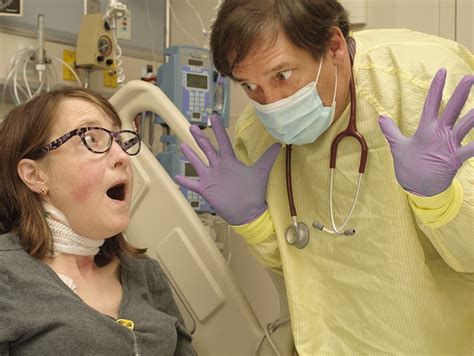
A golden retriever’s comical reaction to its own reflection has gone viral, as the dog mistook its mirror image for an intruder, sparking amusement across social media platforms.
A golden retriever named Wrigley, belonging to a family in Oklahoma, has become an internet sensation after a video captured its amusing reaction to seeing its reflection in a full-length mirror, leading it to believe another dog had entered its territory. The incident, which was recorded and shared online, quickly garnered millions of views and widespread attention, highlighting the often-endearing confusion animals experience when encountering reflections.
The video shows Wrigley initially wagging its tail and approaching the mirror with curiosity. However, upon closer inspection, the dog’s demeanor changes as it seemingly perceives the reflection as a rival. It starts barking aggressively, jumping, and pawing at the mirror in an attempt to confront the perceived intruder. The humorous encounter has resonated with dog lovers and internet users, prompting countless shares, comments, and reactions.
“He’s never seen a full-length mirror before, so he had no idea it was him,” Wrigley’s owner explained, shedding light on the reason for the dog’s confusion. The owner further commented that Wrigley typically loves other dogs and enjoys playing.
The video has sparked conversations about animal behavior, perception, and how they interpret their surroundings. Many viewers shared similar experiences with their pets encountering mirrors or other reflective surfaces, contributing to the virality of the video. The incident serves as a lighthearted reminder of the differences between human and animal cognition, providing entertainment and amusement for a broad audience.
The incident involving Wrigley is not unique, as many pets exhibit similar reactions when confronted with their reflections. This behavior can be attributed to several factors, including a lack of self-awareness and the inability to comprehend the concept of a mirror image. For animals, especially dogs, initial reactions to mirrors are often driven by instinct and territoriality.
Dr. Sarah Miller, a veterinarian specializing in animal behavior, explains, “Dogs primarily rely on scent and sound to identify individuals. When they encounter their reflection, they don’t recognize their own scent and are confused by the visual image. This can trigger a range of responses, from curiosity to aggression.”
Miller adds that the breed, age, and individual personality of the dog can influence its reaction to a mirror. Younger dogs may be more playful and curious, while older dogs may exhibit more cautious or aggressive behavior. Certain breeds, known for their territorial instincts, may be more likely to perceive their reflection as a threat.
In Wrigley’s case, the novelty of the full-length mirror likely contributed to its confusion. Having never encountered such a large and realistic reflection before, the dog may have genuinely believed that another dog had entered its home.
The video of Wrigley’s mirror encounter has not only provided entertainment but has also sparked discussions about the importance of understanding animal behavior and creating safe environments for pets. Experts recommend introducing pets to mirrors gradually and monitoring their reactions to ensure they do not become overly stressed or anxious.
“It’s important to remember that animals don’t process information in the same way that humans do,” says Dr. Miller. “By understanding their perspective and providing them with appropriate guidance, we can help them navigate unfamiliar situations and avoid unnecessary stress.”
The widespread attention that Wrigley’s video has received underscores the power of social media to connect people through shared experiences and heartwarming stories. The internet has become a platform for sharing pet-related content, allowing animal lovers to connect, exchange information, and find amusement in the quirks and antics of their furry companions.
“The internet loves a good animal video,” says social media analyst Emily Carter. “These videos often go viral because they are relatable, heartwarming, and provide a much-needed escape from the negativity that can dominate online spaces.”
Carter adds that Wrigley’s video is a perfect example of content that resonates with a broad audience. The dog’s innocent confusion and playful reaction are universally appealing, transcending cultural and linguistic barriers.
While Wrigley’s encounter with the mirror was undoubtedly humorous, it also serves as a reminder of the importance of responsible pet ownership. By understanding their pets’ behavior and providing them with a safe and stimulating environment, owners can ensure their well-being and prevent unnecessary stress or anxiety.
The family is now taking steps to help Wrigley become more comfortable with the mirror, introducing it slowly and rewarding calm behavior. They hope that by gradually exposing Wrigley to the reflection, the dog will eventually recognize itself and overcome its initial fear and confusion.
“We’re taking it slow,” Wrigley’s owner explains. “We don’t want to scare him or make him anxious. We’re just trying to help him understand that it’s just him in the mirror.”
The case of Wrigley the golden retriever highlights the unique perspective of animals and the importance of understanding their behavior. As the video continues to circulate online, it serves as a reminder of the joy and amusement that pets bring to our lives and the responsibility we have to care for their well-being.
In-Depth Analysis and Background Information:
The viral video of Wrigley encountering the mirror touches upon several key aspects of animal behavior and cognition. To fully understand the context of this incident, it’s important to delve deeper into the science behind animal perception, the specific characteristics of dogs, and the role of environmental factors.
Animal Perception and Cognition:
Animal perception differs significantly from human perception due to variations in sensory capabilities and cognitive processing. While humans rely heavily on vision, animals often prioritize other senses such as smell, hearing, and touch. These sensory differences influence how animals interpret their surroundings and interact with the environment.
Cognition, the mental process of acquiring knowledge and understanding, also varies across species. While some animals exhibit complex problem-solving skills and social intelligence, others rely more on instinct and learned behaviors. Understanding these cognitive differences is crucial for interpreting animal behavior and avoiding anthropomorphism (attributing human traits to animals).
Dogs and Mirror Recognition:
Dogs, like many other animals, lack the ability to recognize themselves in a mirror. This is primarily because they rely more on olfactory cues (smell) than visual cues for identification. When a dog encounters its reflection, it doesn’t recognize its own scent, leading to confusion and misinterpretation.
The classic “mirror test,” developed by Gordon Gallup Jr. in 1970, is often used to assess self-awareness in animals. The test involves placing a mark on an animal’s body (usually on the forehead) while it is anesthetized. When the animal wakes up and sees its reflection, researchers observe whether it attempts to touch or investigate the mark. Animals that recognize the mark as being on their own body are considered to have a sense of self-awareness.
Most dogs fail the mirror test, indicating that they do not possess the same level of self-awareness as humans or some other primates. However, this does not mean that dogs are unintelligent or incapable of complex thought. It simply reflects the fact that their cognitive processes are different from ours.
Factors Influencing a Dog’s Reaction to a Mirror:
Several factors can influence a dog’s reaction to a mirror, including:
- Age: Puppies are often more curious and playful when encountering mirrors, while older dogs may exhibit more cautious or aggressive behavior.
- Breed: Some breeds are known for their territorial instincts and may be more likely to perceive their reflection as a threat.
- Personality: Individual dogs have unique personalities and temperaments, which can influence their reactions to unfamiliar stimuli.
- Previous experiences: Dogs that have had positive experiences with mirrors in the past may be less likely to react negatively.
- Environmental factors: The size, shape, and placement of the mirror can also affect a dog’s reaction. A full-length mirror, like the one in Wrigley’s case, may be more confusing than a small, handheld mirror.
Managing a Dog’s Reaction to a Mirror:
If a dog exhibits negative reactions to a mirror, such as barking, growling, or lunging, there are several steps that owners can take to manage the behavior:
- Desensitization: Gradually expose the dog to the mirror in a controlled environment. Start by placing the mirror at a distance and rewarding the dog for calm behavior. Slowly move the mirror closer as the dog becomes more comfortable.
- Counter-conditioning: Pair the presence of the mirror with positive reinforcement, such as treats, toys, or praise. This can help the dog associate the mirror with positive experiences.
- Redirection: If the dog starts to react negatively to the mirror, redirect its attention to something else, such as a toy or a training exercise.
- Avoidance: If the dog is consistently stressed or anxious around the mirror, it may be best to simply remove it from the environment.
- Consultation with a professional: If the dog’s behavior is severe or persistent, consult with a veterinarian or a certified dog trainer for further guidance.
The Role of Social Media:
The virality of Wrigley’s video highlights the significant role that social media plays in sharing animal-related content and connecting animal lovers around the world. Platforms like YouTube, TikTok, Instagram, and Facebook have become hubs for sharing videos, photos, and stories about pets, creating a sense of community and fostering a greater appreciation for animals.
Social media can also be a valuable tool for educating the public about animal behavior and responsible pet ownership. By sharing informative content and dispelling common myths, animal advocates can help to promote better understanding and care for animals.
However, it’s important to be mindful of the potential downsides of social media, such as the spread of misinformation and the promotion of harmful stereotypes. It’s crucial to critically evaluate the information that you encounter online and to rely on reputable sources for accurate and reliable information.
Ethical Considerations:
While it’s often entertaining to observe animals’ reactions to mirrors, it’s important to consider the ethical implications of such observations. It’s crucial to ensure that the animal is not being subjected to undue stress or anxiety. If an animal exhibits signs of distress, such as excessive barking, growling, or cowering, it’s important to remove the mirror and avoid further exposure.
It’s also important to avoid anthropomorphizing animals or attributing human emotions to them. While it’s natural to feel empathy for animals, it’s important to remember that their cognitive processes and emotional experiences are different from ours.
Expanded Context and Information:
The story of Wrigley and his mirror encounter provides a unique opportunity to explore the broader context of animal cognition, perception, and the human-animal bond. By understanding the science behind animal behavior and the factors that influence their reactions to the environment, we can better appreciate their unique perspectives and provide them with the care and support they need.
The video of Wrigley serves as a reminder of the joy and amusement that pets bring to our lives. Their innocent curiosity and playful antics can brighten our days and provide a much-needed escape from the stresses of modern life. By cherishing our relationships with animals and respecting their needs, we can create a more compassionate and harmonious world for all.
The ongoing research into animal cognition continues to shed light on the complex mental lives of animals and challenge our assumptions about their intelligence and sentience. As our understanding of animals deepens, we can expect to see further advancements in animal welfare and conservation efforts.
The story of Wrigley also underscores the importance of responsible pet ownership. By providing our pets with a safe, stimulating, and loving environment, we can help them to thrive and live fulfilling lives. This includes understanding their individual needs, providing them with appropriate training and socialization, and seeking professional help when necessary.
In conclusion, the viral video of Wrigley the golden retriever’s encounter with a mirror is more than just a funny anecdote. It’s a window into the fascinating world of animal cognition and perception, a reminder of the joy that pets bring to our lives, and a call to action for responsible pet ownership. By embracing a deeper understanding of animals and their needs, we can create a more compassionate and harmonious relationship with the creatures that share our planet.
Frequently Asked Questions (FAQ):
1. Why did Wrigley, the golden retriever, react aggressively to the mirror?
Wrigley’s aggressive reaction was likely due to a combination of factors. Firstly, he had never encountered a full-length mirror before, so he was unfamiliar with the concept of a reflection. Secondly, dogs rely more on scent than sight for identification. When Wrigley looked in the mirror, he saw another dog but didn’t recognize its scent, leading him to believe it was an intruder in his territory. This triggered his territorial instincts, causing him to bark, jump, and paw at the mirror. “He’s never seen a full-length mirror before, so he had no idea it was him,” Wrigley’s owner explained.
2. Do all dogs react the same way to mirrors?
No, not all dogs react the same way to mirrors. A dog’s reaction can depend on several factors, including its age, breed, personality, and previous experiences. Puppies may be more curious and playful, while older dogs might be more cautious or aggressive. Some breeds are naturally more territorial, and a dog’s individual temperament will also play a role. Dogs that have been exposed to mirrors positively in the past are less likely to react negatively.
3. What does it mean if a dog doesn’t recognize itself in a mirror?
A dog’s failure to recognize itself in a mirror is not indicative of low intelligence. It simply means they lack the self-awareness to understand that the reflection is their own image. Dogs primarily use scent for recognition, so the lack of their own scent in the reflection leads to confusion. The “mirror test,” commonly used to assess self-awareness, is often failed by dogs, which indicates that their cognitive processes for self-identification differ significantly from those of humans and certain other animals.
4. How can I help my dog get used to a mirror if it’s scared?
If your dog is scared of mirrors, you can help it adjust through desensitization and counter-conditioning. Start by placing the mirror at a distance and rewarding your dog for calm behavior. Gradually move the mirror closer as your dog becomes more comfortable. Pair the presence of the mirror with positive reinforcement, such as treats, toys, or praise. This can help your dog associate the mirror with positive experiences. If your dog continues to show signs of stress, consult with a veterinarian or a certified dog trainer.
5. Is it ethical to film my dog’s reaction to a mirror if it’s clearly distressed?
It’s essential to prioritize your dog’s well-being above entertainment. If your dog shows signs of distress, such as excessive barking, growling, cowering, or attempting to escape, it’s crucial to remove the mirror immediately. Filming a distressed animal for entertainment is unethical. Always ensure that your dog’s environment is safe and comfortable, and avoid situations that cause unnecessary stress or anxiety. If you choose to film your dog’s reaction, do so with caution and be prepared to stop if your dog shows any signs of discomfort.









